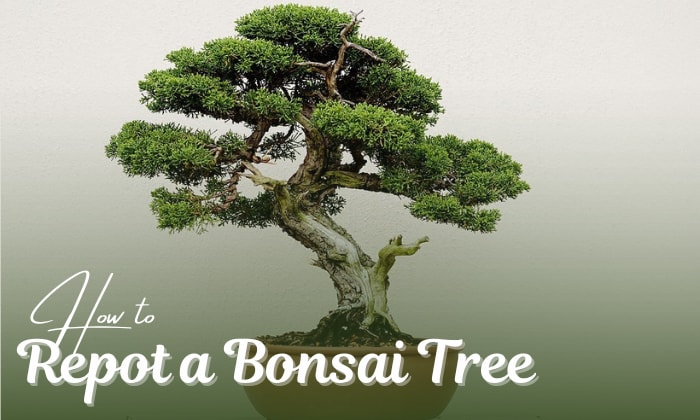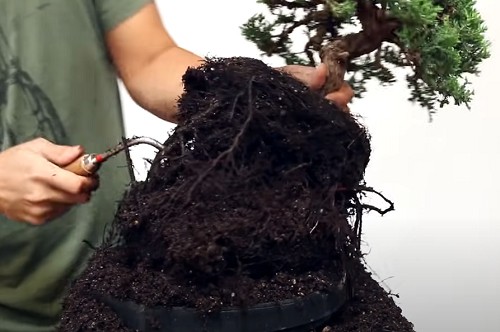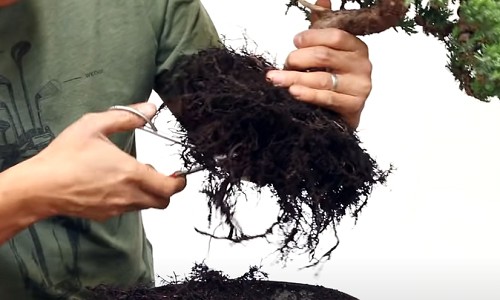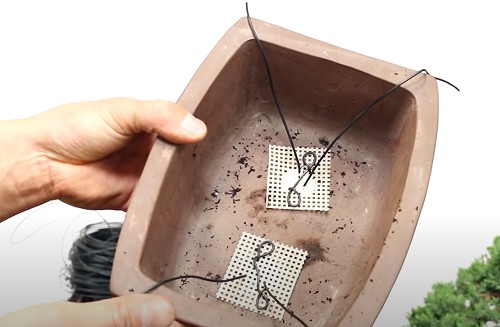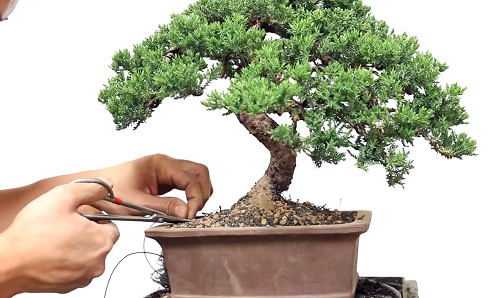Bonsai is not only a method of cultivating plants but also an art form. Since its creation over a thousand years ago, bonsai has been a way to display trees in their close-to-natural state while enabling them to grow in a space much smaller than their typical habitats.
That said, even if we plant miniature bonsai with pruned roots and wires, it’s necessary to know how to repot a bonsai tree, as eventually, the plant will outgrow its container. If you found yourself in this predicament, read below.
Table of Contents
How to Repot Bonsai Trees
What to prepare
To make the steps easier to do, you should prepare a bonsai repotting kit with the following:
- Plastic drainage mesh
- Shears & 70-100% rubbing alcohol for tool disinfection
- Root cutter
- Root hook
- Wire cutter and 2mm wire
- Pliers (optional)
- Bonsai tree potting soil
Since any tree may be turned into a bonsai, it’s vital that you pick the appropriate soil for your plant species.
For a ficus bonsai tree or a bonsai money tree, a potting mix for evergreens like Hoffman’s is advisable.
Meanwhile, we recommend a plant mix for pines and conifers if you repot juniper bonsai, or purchase an all-purpose product like Leaves and Soul or Tinyroots’ soil blend, which will work for all bonsai varieties.
In any case, the soil for the tree should be well-drained, highly aerated, and water-absorbing. Common DIY materials for this planting medium are equal parts of Akadama, pumice, and lava rock.
Of these three components, people often add more Akadama or lava rock to enhance water absorption or drainage, depending on where they live.
If you find the adjustment troublesome, it’s best to stick with a commercial formula.
- Container for bonsai plant
The container for repotting bonsai tree should be porous ceramic or porcelain, with drain and wiring holes at the bottom, plus a height that equals the tree trunk in size.
The shape and color can be anything that matches your preference, whatever you think complements the aesthetics of the tree.
Step 1 # Remove the bonsai tree from its pot.
You need to cut the wire at the bottom of the pot first, since it serves as a tether for the tree. Use the wire cutter you prepared, and run the root hook along the rim of the pot to loosen the soil.
Upend the container to get the tree out.
Step 2 # Remove old soil from the tree.
Use the root hook again to remove old soil from the tree. You want to pry the thick roots apart but not damage them, so be gentle.
Step 3 # Trim off long and dead roots.
The instructions for this step are straightforward. Look for any old, big long roots and trim them off—they will grow back along with new roots, so you don’t have to worry. Cut away all dead, diseased parts as well to give your plant a revival.
Remember to disinfect your shears before and between cuts, and keep at least 70 to 75% of the roots intact.
Step 4 # Line mesh and wire on the drain holes.
Grab the drain mesh you prepared and cut it to a size slightly bigger than the drain holes on your new pot; reserve one mesh piece for each hole to keep the soil from falling out.
Then take the wire roll, cut from it a six to seven inches long section, and make two separate loops at the middle of the wire.
Push the ends of the wire through the holes in the mesh, and place the whole combination atop the drain hole. Flip the pot over and press the protruding sections of the wire down so that they’re flat against the pot.
You can repeat this process for the other hole(s).
Step 5 # Cut more wire for securing the tree roots.
Use the width of your container to estimate the length of the wire needed, then cut two wire pieces accordingly, ensuring they’re extensive enough to reach over the edges of the container.
Run both wires through the mesh holes at the bottom, and you’ve created something to secure the roots with.
Step 6 # Replant your bonsai tree.
Pour your bonsai repotting mix into the new container—a thin layer of it should be adequate. Replant a bonsai tree by putting it into the soil and backfill the empty space in the container.
Secure the wires you made in the previous step at the back of the plant. You can twist the wires with your hand or use pliers for extra force.
Finally, care for a bonsai tree by watering it whenever the soil gets dry and satisfying the requirements of your plant species. A juniper and wisteria are best kept outdoors with direct sunlight, but if you’re repotting a bonsai ficus or elm, you can grow them indoors.
Bonsai plants will need five hours of direct sunlight per day and a temperature of 64 to 75℉ during mornings and afternoons. The air should be about 7 to 14 degrees cooler at night, and you can use a thermostat to regulate how warm or cold your home is.
It’s also vital to take care of a bonsai tree by positioning it away from any wind sources, such as fans or open windows.
When and Why Should I Repot a Bonsai Tree?
As bonsai leaves get bigger, their roots become more extensive to provide them with nourishment. Eventually, you’ll end up with a container that has more roots than soil and nutrients, which puts the health of the plant in jeopardy.
It is essential to transplant a bonsai tree whenever the roots form a circle at the bottom or stick out of the container base. These symptoms signify a pot-bound plant that lacks oxygen.
In addition, it’s necessary to repot bonsai trees if the soil is too compact, old, or soggy. Do this task in early spring or fall, when new white roots start to appear but before dormancy ends.
Note that repotting in spring is safer than in fall, and it’s best to check your cultivar’s recommendation before replanting it in autumn. Other pointers to take note of are:
- Fall transplants should be young trees with little need for pruning.
- Avoid uprooting your plant in cold weather.
- The ideal time for repotting is often February, never in winter or summer.
How Often to Repot a Bonsai Tree?
Old trees can last longer between transplants, often requiring new containers every three to five years rather than the two years average of young bonsai.
For beginners, a quick way to decide when to repot bonsai is to check the roots and see if they’re constricted. It’s also wise to give your plants new homes if the soil has salt, minerals, and particles like peat moss dust that can hamper growth.
Conclusion
How to repot a bonsai tree is one of the first things you should learn before buying or growing this kind of plant.
With knowledge on this topic, you can keep your bonsai healthy before proceeding to learn how to shape and guide them with wires and clamps. Soon enough, your tree will become a centerpiece that enhances the beauty of your home, similar to a painting or piece of accent furniture.
Read more:

Hi, I am William – Floridayards’ digital content creator. My job is to find answers to all your concerns with thorough research and our team’s expert advice. I will also bring you honest reviews on the best products and equipment for raising your beautiful garden. Please look forward to our work!


